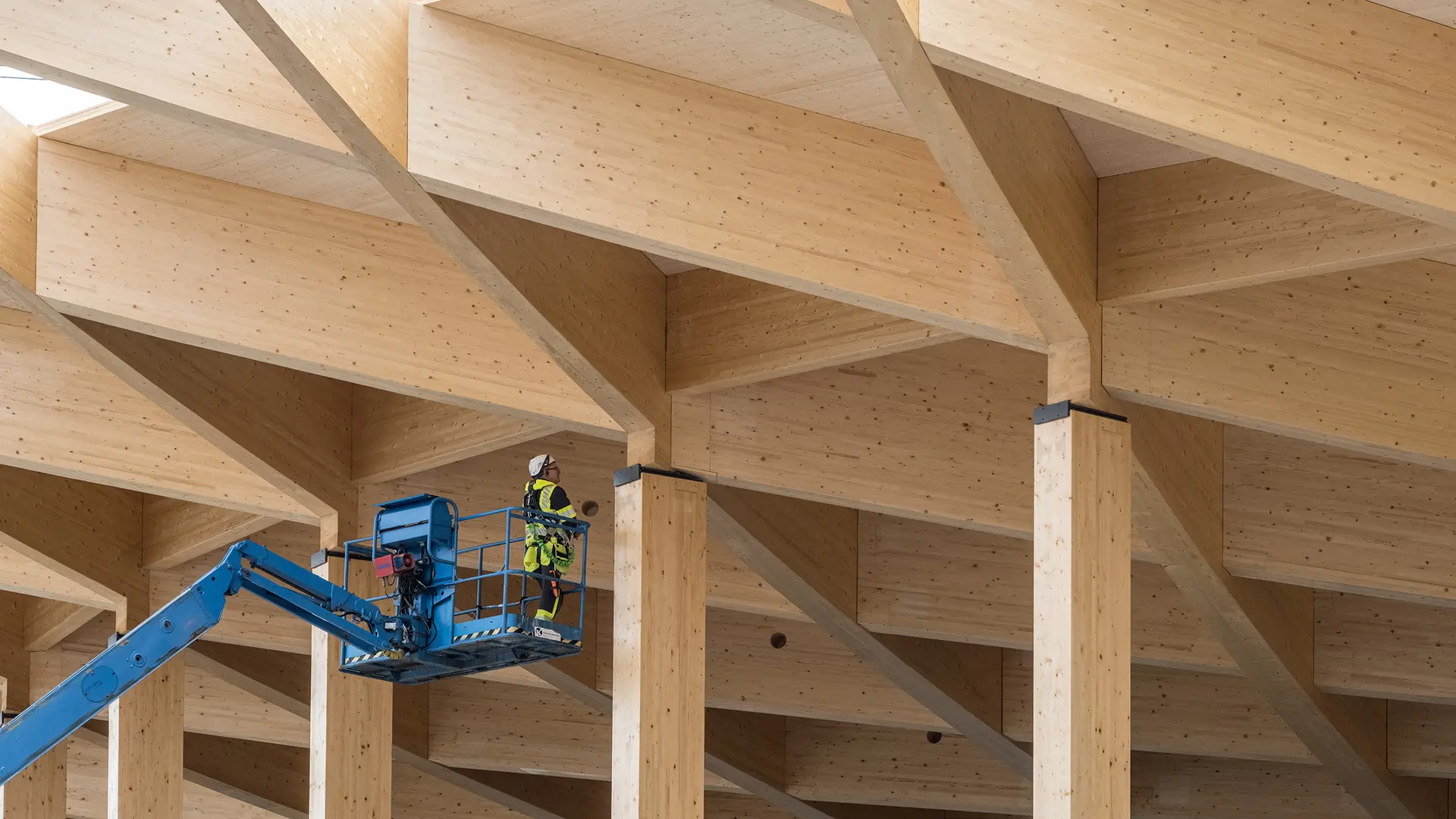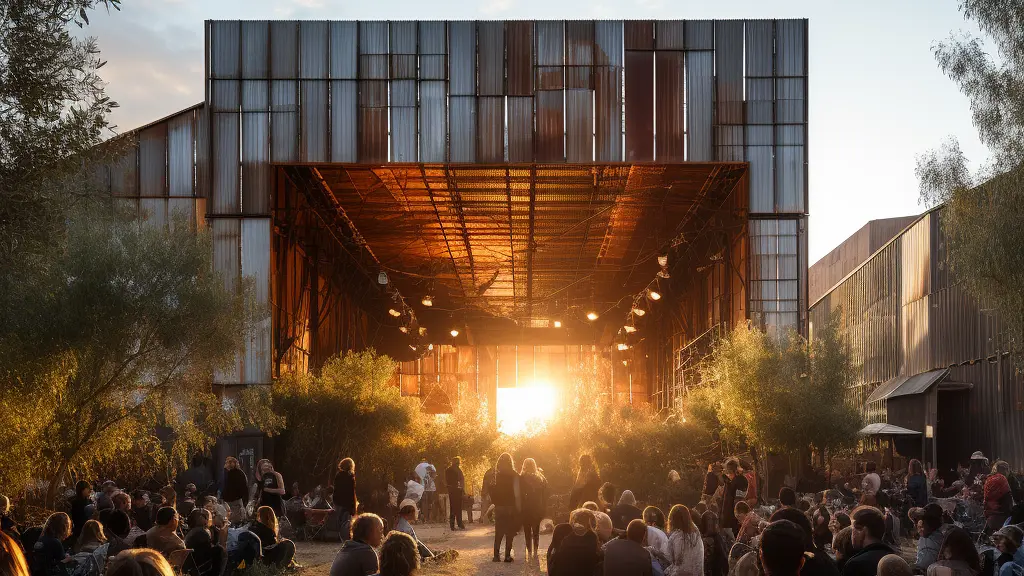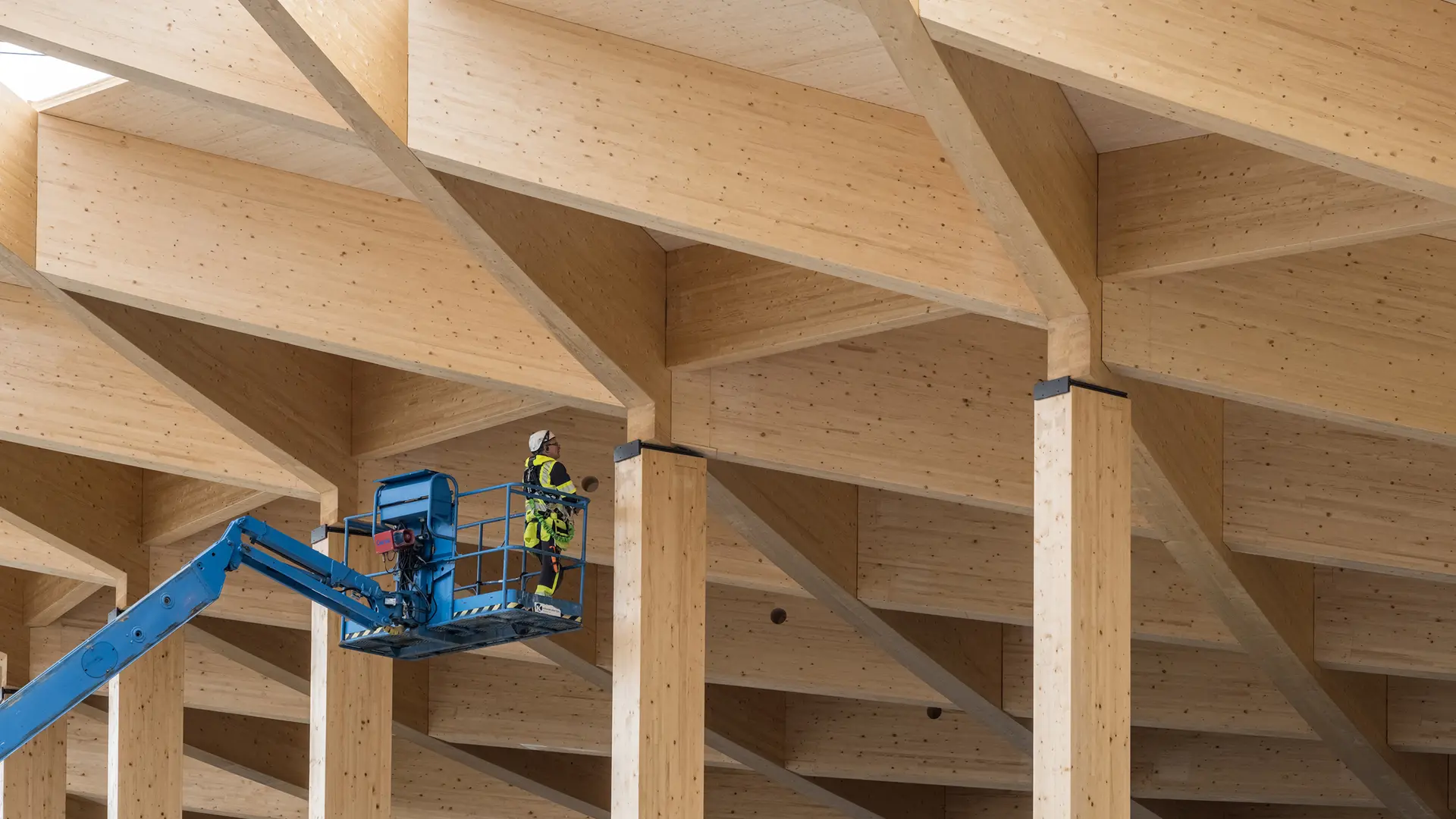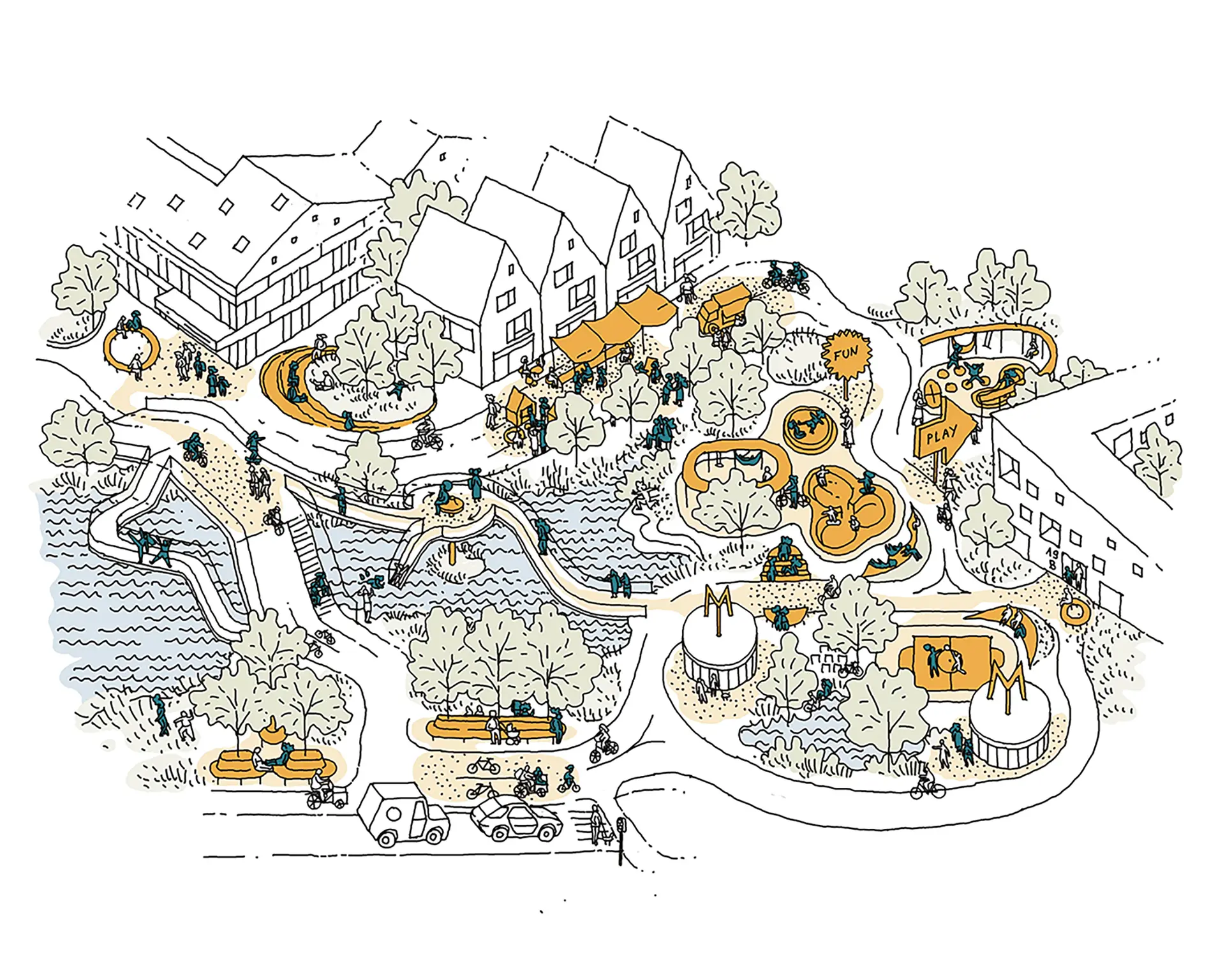An architect's guide to upfront carbon

The construction industry may have an outsized impact on the environment, but it also has enormous potential to be at the forefront of change. Material selection can make a big difference, but often decision-making is solely based on the carbon the building emits throughout its entire lifetime. But, what about the footprint the materials come with before ending up at the construction site? In this Q&A, Head of Materials at Henning Larsen, Martha Lewis gets you up to speed in understanding the impact of construction materials.
What is “upfront carbon”?
"Upfront carbon is the carbon emitted in the production phase of products and materials, from mining and processing of natural resources, transport to processing sites, and the manufacturing phases. So, this is a carbon ‘cost’ that occurs before any architecture even happens.
Essentially this relates to the building blocks for realizing our designs, so if we are serious about reducing the carbon footprint of our projects and of our industry, architects need to be knowledgeable about upfront carbon. These are the emissions associated with the here and now, and as such, they are absolutely crucial in driving our choices of materials and products."
How great is the impact of materials in the construction industry – and how are we as architects accountable?
"To put it into perspective, the climate change impacts from the production of construction materials are about 3 times higher than the impacts from the aviation sector."
What is a common misconception when the conversation turns to sustainable construction materials?
"That it’s possible to build healthy and environmentally friendly buildings with the construction material palate that is in use today. While projects with conventional products can be certified “sustainable” buildings, their creation is still challenging planetary boundaries.
Another major common misconception about sustainable building practices is the premise that if construction materials are chosen based on the longest possible lifetime, this is then the most sustainable solution. The latest IPCC report indicates that the window of opportunity to target a maximum 2-degree warming is within this decade; meaning that construction products with high embodied carbon in the production phases and long lives are actively increasing the current atmospheric carbon. Ideally, our choices should fall on products that have the lowest possible upfront carbon along with the possibility to be demounted and reused at end of life."
Is preservation and restoration always a better option than demolition and new build?
"If the structure is intact, then yes. A building’s structural skeleton (including its foundations) is the building component with the highest embodied carbon. So, if you’re not starting your construction from scratch, there are significant ‘carbon savings’ to be had. All the better if you can reuse even more of the existing building!
It’s important to understand that it’s not just about carbon. Our existing buildings contain valuable resources, some of which are being squeezed. Even the ubiquitous concrete is made of raw materials that have a finite quantity on the planet. As architects, we work within the existing framework of economic budgets, regulations, and the functional program. Future resource availability and carbon profiling could be factors that we integrate into the design challenge."
How does the collective mindset in the construction industry need to change to meet the UN’s targets* by 2030?
"The most important mindset change would be a reconfiguration of the economy of construction. The bottom line is no longer simply the dollars and cents, the kroner and ører, rather, the environmental cost must be factored into the economy of the project. In time, this will come in the form of carbon taxes. If high enough, the carbon tax will provide an effective incentive to reduce pollution associated with the manufacturing of materials. Architects also have a role in balancing this double budget, the familiar hard cost construction budget as well as the new carbon budget.
One of the greatest predicaments in the construction sector is how to respond to rapid urbanization and the growing need for more housing while also keeping the carbon emissions close to zero. And the unfortunate answer is, we can’t.
There are good strategies, however, for designing buildings with the lowest possible carbon footprints and simultaneously planning regenerative landscaping. However, these require a new intelligence in design and this is where the need for carbon literate architects comes in! A hefty knowledge lift amongst my colleagues has the potential to have a truly significant effect on the climate impacts of our industry."
Martha and her team have developed Henning Larsen’s Unboxing Carbon, a course that aims to raise the bar around carbon literacy across our industry. The course is available for architecture offices as well as other professional organizations.
*CO2 emissions must drop 7.6 percent per year from 2020 to 2030 to keep temperatures from exceeding 1.5°C and 2.7 percent per year to stay below 2°C. Denmark has committed to a 70 percent reduction by 2030
Top image: World of Volvo construction site by Rasmus Hjortshøj



